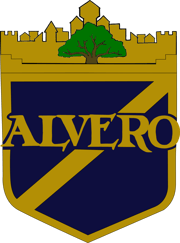
The Collective “Self”: The Team as an Organism
TEAMWATERRUGBYCOLLECTIVE IDENTITY
Do you remember that middle school science experiment involving static electricity, a comb, and a water faucet? The experiment is designed to demonstrate that, while disconnected molecules of water act as individual entities, as soon as those same molecules are connected together, the stream that they create behaves as a single living organism. This mysterious relationship between the One and the Many, or the individual and the collective, has inspired almost continuous contemplation and dialogue from the Tao Te Ching to Thomas Aquinas and into the present.
Modern Western culture, shaped by Classical Liberalism, generally asserts that the individual human is to be regarded as the locus of agency and that, consequently, society should be structured to protect the individual's property and to facilitate his pursuit of his unique goals and desires. I certainly believe this philosophy has prompted the cultivation of some healthy and even revolutionary societal patterns and structures, like the “innocent until proven guilty” concept. Also, despite their emphasis on the individual, I don't believe the architects of Western culture dismissed the significance of the collective. Indeed, the principle of “unity” is a foundational tenet of many Western nation states. However, modern Western society's focus on preventing the consumption of the individual by the collective may also be hindering the integration of its citizens into a higher body. The development of what we now experience as Western culture seems to have increasingly inhibited its citizens from apprehending the collective as the “Self”.
Perhaps unable to articulate this phenomenon until recently, I've observed it and perceived it, sort of intuitively, in inter-team dynamics when I assumed the role of captain for my high school soccer team. While I'm not entirely aligned with his writing and opinions, some of Howard Bloom's ideas helped crystallize this realization for me; observations on how the human integrates into community and the various roles we can assume in a group (more connection of Bloom’s ideas to come in future writing). Another surprising source of insight for me was Wikipedia's page on cockroaches. Cockroaches exist primarily as a colony, not as individuals, and are one of few animal species widely considered to be able to survive nuclear apocalypse. Early in our marriage, my wife and I spent an entire date night reading this Wikipedia page aloud. I learned more than I ever wanted to know about these “pest” creatures and the experience was surprisingly fascinating! In a publication titled The Weight of the Clan, researchers have documented evidence that a cockroach's capabilities are significantly reduced when raised in isolation from a colony. If you're a leader looking to develop an organization in its ability to overcome adversity, look to the cockroach colony as a model.
Certainly, as we consider the function of a team and the human's role in a community, we must be careful not to overemphasize the collective, as doing so can suffocate the importance of the individual. In some strong collectivist cultures, where a person's sense of their own societal value might be heavily informed by the role they assume within it, high suicide rates among young people could be connected to a realization, internalization, or perception that they are fated to fill a societal function that is not considered meritorious or honorable. But let's try to grasp both extremes here; to consider the macro and the micro perspectives. If we don't take a step back and try to remove ourselves from our limited individual perspective every once in a while, we may forget that each one of us is a tiny organism, a limited actor, a speck of dust in a vast system of life. In these circumstances, a person's motives may incline toward ego-centrism. Whereas, if our vision is fixed at the macro level, we may fail to comprehend that, although we are small actors in an expansive universe, every single one of our decisions and actions create immeasurable ripple effects across the universe. It's common for people to lose a sense of purpose and motivation in these scenarios and this can open the door to psychological chaos and/or malaise.
It's important for us to integrate the various levels of the fractal structure of Being into our perspective with appropriate fidelity: to sharpen the focus of our lens, admire the grace in an individual's actions, and celebrate their triumphs and also to zoom out to set their contributions into a larger frame and appreciate how they contribute to a grander purpose. At a base level, cells make up the organs and systems that comprise the body. At a higher level, the human becomes an “organ” in the “body” of the community. Communities and states then play a significant role in the 'bodily function' of larger Humanity. The individual human is not an isolated being but rather is always a motile actor within a larger body, just like each one of our individual cells is distinctly separate, yet participates in a larger purpose. For this reason, I can travel to the other side of the world and still sincerely and meaningfully refer to another human as my brother or sister. Ever since language to convey this truth has existed, scientists and sages have rediscovered and reiterated it in various ways: we're all connected.
On the weekends I enjoy coaching for a local youth rugby academy. Rugby provides a great collective atmosphere in which such team building lessons can be highlighted and applied. Generally in rugby, personal names are not sewn or sublimated on the backs of the jerseys. Each jersey number is simply associated with a specific position on the field. The members of the team each have a well-defined role and a player earns a jersey based on how well he embodies the characteristics demanded by the role of that respective number. A good player, aware of his limitations, showcases his unique talents and strengths in internalizing and executing the requirements of the role he fills, yet he does so in a way that is integrated with the purpose (τέλος) and spirit (anima) of the greater team. The triumph of the team depends largely on the willingness of its players to sacrifice some of their individual identity in orientation toward the collective vision. When it happens well, it's amazing to observe this transformation! What were at one time a collection of energetic little humans scattered around a grass pitch are drawn up together and bound into a purpose higher than themselves; an end deeper than any one of them could ever imagine. At that moment, they become a larger distinct living organism captivated by a unified spirit. They are a Team.
Water can be considered the primary sustaining element of life on earth and is one of nature's great instructors: at once the most fluid, soothing, and gentle, and simultaneously one of the most powerful and destructive forces. When I consider that simple middle school experiment using a comb and a stream of water, I'm repeatedly reminded that a group in which each person pursues only his own individual goals leads to dispersion of attention and dissolved aspiration, and ultimately ends in fractured community. Whereas, when each member of the group unites with the higher spirit (anima) and aligns their individual goals and desires with the greater good purpose (τέλος) of the group, such a team begins to operate as a single living organism, to flow like water, each member deeply connected and in tune with one another. As demonstrated in the beauty of French rugby or the terrifying power of an unleashed river, there is no obstacle in the world that can block the path of such a fluid and cohesive force.

